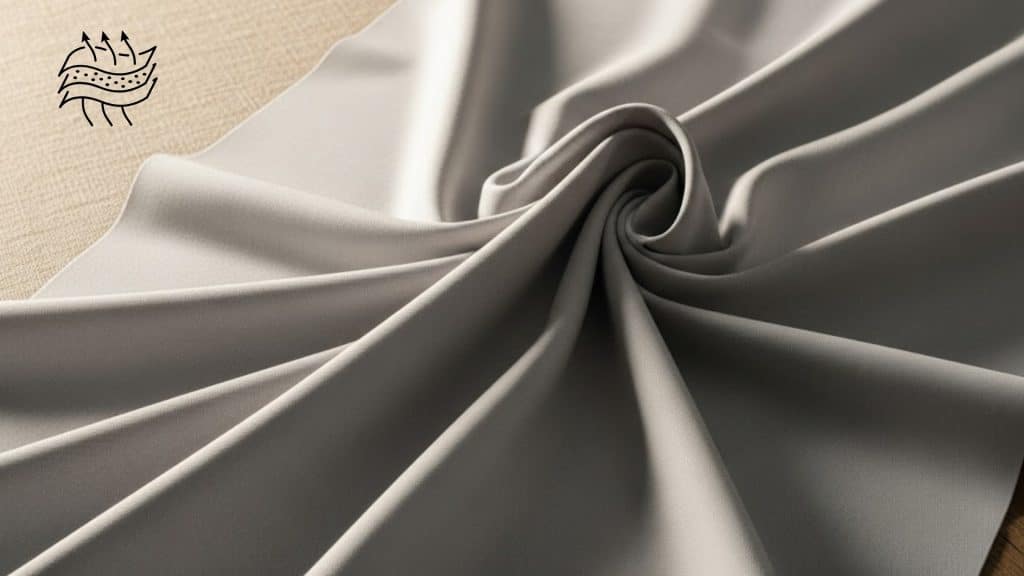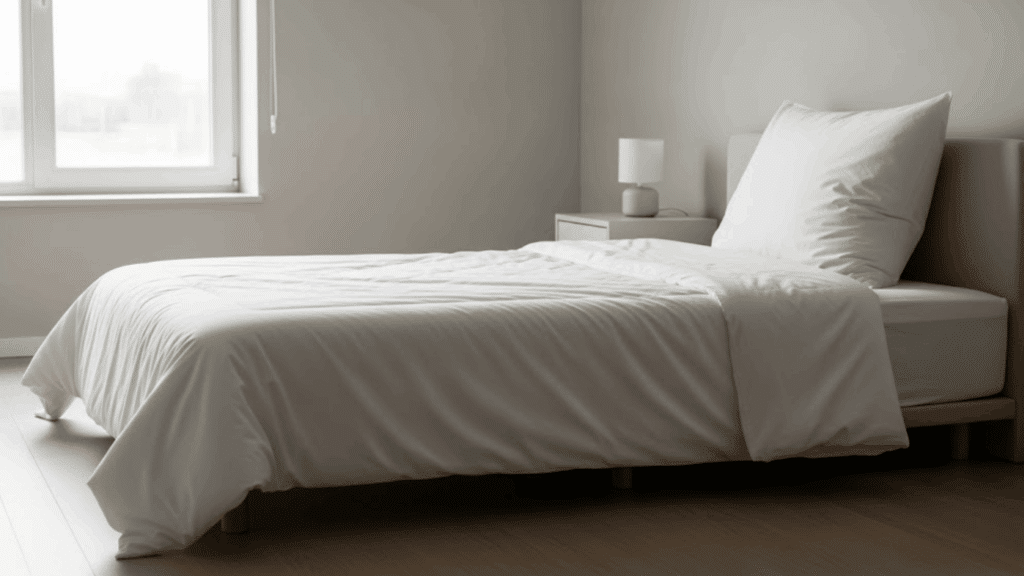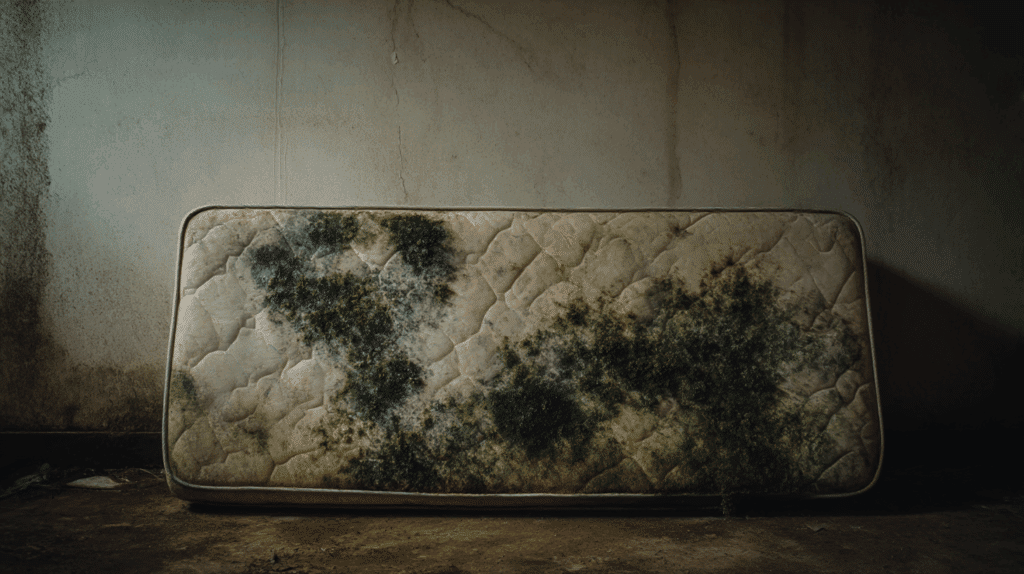Have you ever wondered, “is lyocell breathable?” when shopping for comfortable clothes or bedding?
With so many fabric options available today, it can be confusing to know which ones will actually keep you cool and comfortable. Lyocell has been gaining popularity as a sustainable, soft fabric, but many people are still unsure about its breathability.
If you’re looking for summer clothes, workout gear, or cozy pajamas, understanding how well a fabric breathes is crucial for your comfort.
It will help you understand everything you need to know about lyocell’s breathability, how it compares to other fabrics, and why it might be the perfect choice for your wardrobe.
Understanding Lyocell: What You’re Really Wearing
Lyocell is a type of fabric made from wood pulp, usually from fast-growing trees like eucalyptus and beech. Think of it as turning trees into soft, comfortable clothing!
The process begins with chopping wood into small pieces, followed by dissolving it with special chemicals to create a thick liquid. This liquid gets pushed through tiny holes to form long fibers, which are then spun into yarn and woven into fabric.
What makes Lyocell special is its “closed-loop” process, meaning the chemicals used to make it get recycled and reused instead of being thrown away.
This makes Lyocell much better for the environment than many other fabrics, while still creating clothes that feel smooth and comfortable against your skin.
Is Lyocell a Natural Fiber?
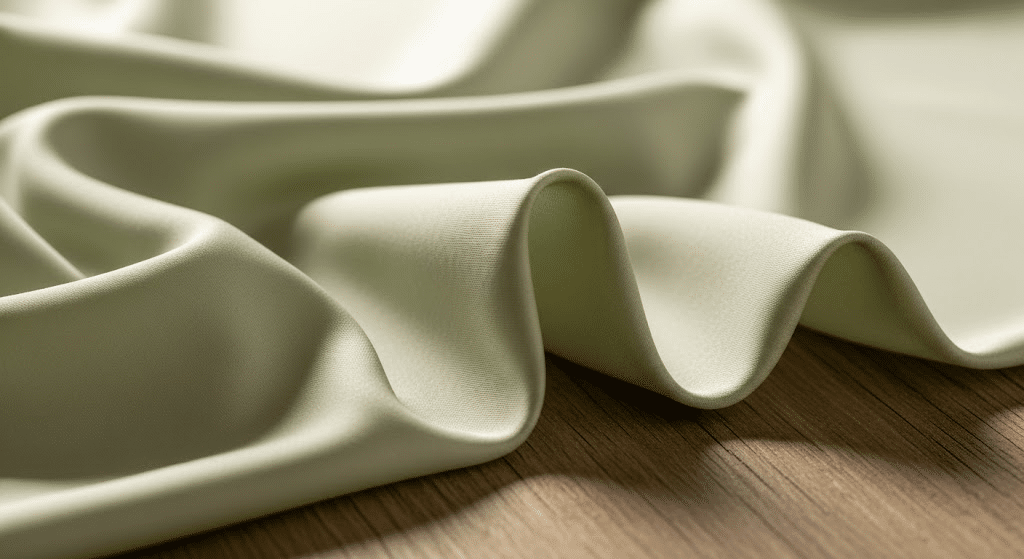
Lyocell sits somewhere between natural and synthetic fibers, making it what experts call “semi-synthetic.” True natural fibers like cotton, wool, and linen come straight from plants or animals without much processing.
Synthetic fibers like polyester are made completely from chemicals. Lyocell starts with natural wood but needs chemical processing to become fabric, putting it in the middle category.
However, many people group lyocell with natural fabrics because it comes from plants and breaks down naturally when thrown away.
Unlike plastic-based synthetics, lyocell behaves more like cotton or linen in how it feels, breathes, and impacts the environment. So while it’s technically semi-synthetic, it shares many qualities with truly natural fibers.
Is Lyocell Breathable?
Yes, lyocell is very breathable! This fabric lets air flow through it easily, which helps keep you cool and comfortable. Lyocell naturally pulls moisture away from your skin and lets it evaporate quickly, so you don’t feel sticky or sweaty.
- Perfect for hot weather because it doesn’t trap heat against your body
- Allows air to move freely through the fabric fibers
- Helps regulate your body temperature by letting excess heat escape
- Doesn’t hold onto sweat like polyester does, which can make you feel clammy
This makes Lyocell an excellent choice for summer clothes, workout gear, or any time you want to stay cool and dry. Many people also love it for pajamas and bed sheets because it helps prevent overheating during sleep.
How Lyocell Compares to Other Common Fabrics
When choosing breathable fabrics, it helps to see how Lyocell measures up against other popular options. Here’s a simple comparison focusing on the features that matter most for comfort and breathability:
| FEATURE | LYOCELL | COTTON | LINEN | POLYESTER |
|---|---|---|---|---|
| Breathability | Very breathable | Breathable | Highly breathable | Poor |
| Softness | Smooth, soft, slightly silky | Soft, natural feel | Rougher texture | Can feel synthetic |
| Moisture-wicking | Excellent | Moderate | Moderate | Low |
| Best for | Warm weather, sensitive skin | Everyday wear | Hot, dry climates | Sportswear (not for heat) |
| Sustainability | Eco-friendly, low-impact process | Depends on how it’s grown | Natural and biodegradable | Synthetic, not biodegradable |
As you can see, lyocell combines the best qualities from different fabrics. It’s as breathable as linen but much softer, and it handles moisture better than cotton while being more sustainable than polyester.
Pros and Cons of Lyocell
Like any fabric, lyocell has both good points and some drawbacks. Understanding these can help you decide if it’s right for your needs. Let’s take a closer look at what makes Lyocell special and where it might fall short.
Pros:
- Keeps you cool and dry by letting air flow through and pulling sweat away.
- Feels silky smooth against your skin, even softer than cotton.
- Great for people with allergies or sensitive skin since it doesn’t irritate.
- Breaks down naturally when thrown away, making it good for the planet.
- Resists bacteria and odors, so clothes stay fresher longer.
Cons:
- Costs more than basic cotton or polyester clothes.
- Wrinkles easily and may need ironing or steaming.
- It can shrink or get damaged if washed in hot water or high heat.
- Not as widely available as other fabric types in stores.
- It may lose its shape if not cared for properly.
Overall, most people find that lyocell’s benefits outweigh these minor downsides, especially if you value comfort and environmental friendliness. The extra cost often pays off in the long run because lyocell clothes tend to last longer and feel better than cheaper alternatives.
Best Uses for Lyocell Fabric
Lyocell’s breathable and moisture-wicking properties make it perfect for clothing and items where staying cool and comfortable matters most. Here are some of the best ways to use this versatile fabric in your everyday life.
1. T-Shirts
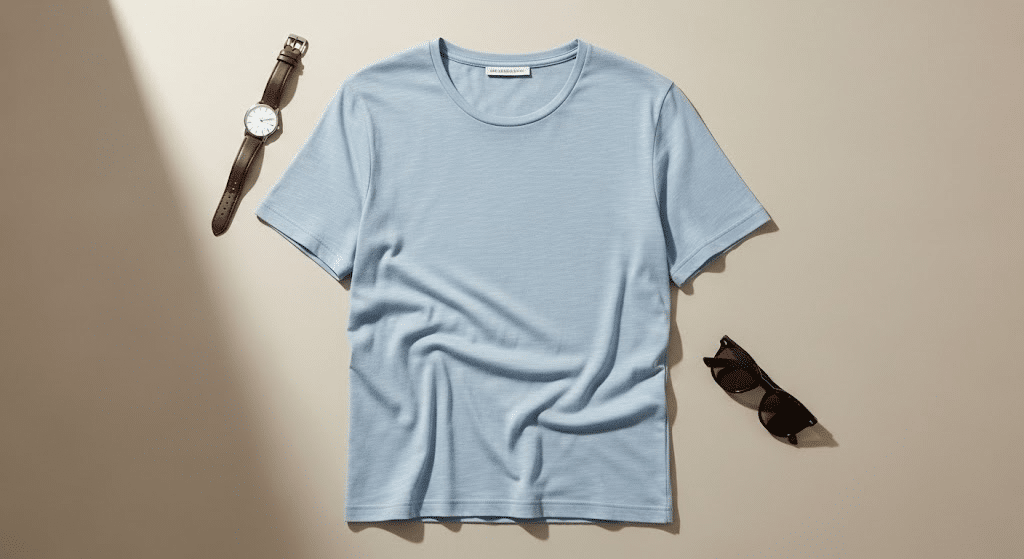
Lyocell t-shirts are amazing for daily wear because they keep you dry and comfortable all day long. The fabric feels soft against your skin and doesn’t get smelly like synthetic shirts do.
If you’re at work, school, or just hanging out, lyocell tees help regulate your body temperature and prevent that sticky feeling you get with other materials.
2. Summer Clothing
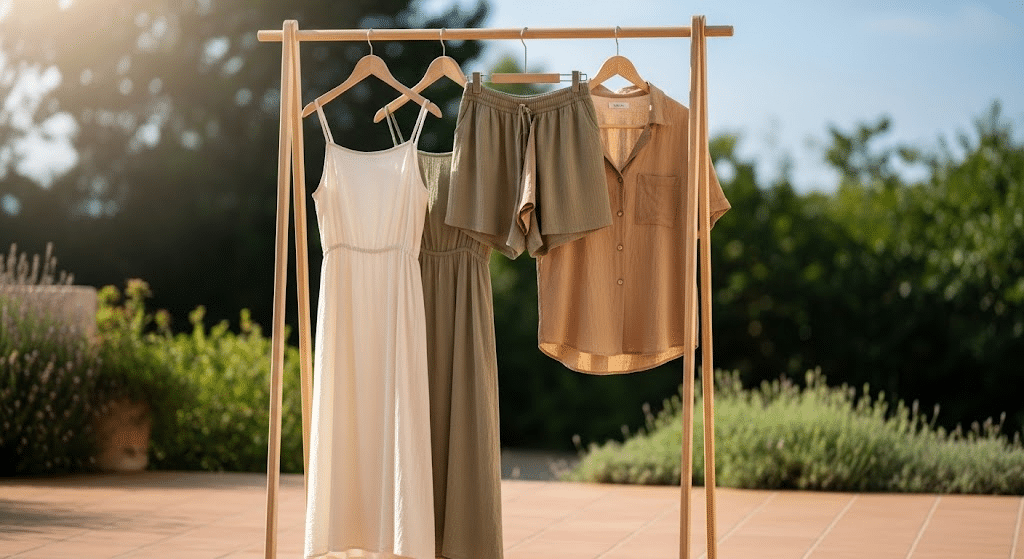
Summer dresses, shorts, and lightweight tops made from lyocell are perfect for hot weather. The fabric lets air flow through easily, so you stay cool even when temperatures rise.
Lyocell summer clothes also dry quickly if you get caught in the rain or work up a sweat, making them ideal for vacation wear and outdoor activities.
3. Sleepwear
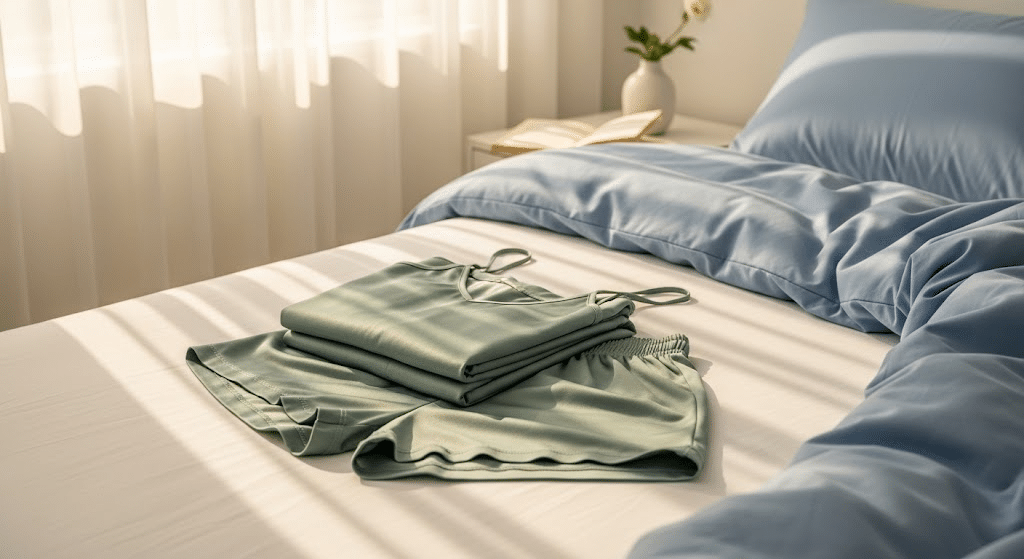
Lyocell pajamas and nightgowns help prevent overheating while you sleep, leading to better rest. The smooth texture feels gentle on your skin, and the moisture-wicking properties keep you from waking up sweaty.
Many people who struggle with night sweats or hot flashes find lyocell sleepwear much more comfortable than cotton or synthetic alternatives.
How to Care for Lyocell?
Taking good care of lyocell is easy and helps keep it soft and breathable for years. Always wash Lyocell clothes in cold water on a gentle cycle to prevent shrinking and damage.
Skip the hot water and harsh detergents, which can break down the fibers. When drying, use low heat or air dry whenever possible, since high heat can make the fabric stiff and less comfortable.
If your lyocell clothes get wrinkled, iron them on a low setting or use a steamer.
Following these simple care tips helps preserve the fabric’s natural breathability and silky softness. With proper care, your lyocell items will stay comfortable and last much longer than poorly maintained pieces.
Final Thoughts
Lyocell stands out as a fabric that brings together comfort, breathability, and sustainability in a way that few materials do.
With its moisture-wicking properties and temperature-regulating abilities, it’s a smart choice for everything from everyday t-shirts to breathable bedding and lightweight summer wear.
While it may be a bit more of an investment than basic fabrics, the comfort and eco-friendly benefits make it a strong contender for anyone looking to upgrade their wardrobe or home textiles.
Have you tried Lyocell before? Let us know your thoughts or questions in the comments below!

